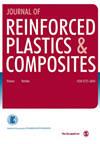基于新型跟踪元件法的 NOL 环形绕线过程中的张力松弛
IF 2.2
3区 材料科学
Q3 MATERIALS SCIENCE, COMPOSITES
引用次数: 0
摘要
NOL 环被用作检测丝状缠绕复合材料性能的试样,其缠绕张力在决定最终缠绕产品的性能方面起着关键作用。用于模拟缠绕过程的传统方法有几个缺点,包括张力设置不准确和难以控制缠绕层厚度。针对这些局限性,利用跟踪元素法的响应机制,构建了精确的 NOL 环三维(3D)缠绕有限元模型。采用无线薄膜压力测试系统动态测量层间压力,去耦合影响张力松弛的因素,重点研究复合材料缠绕张力的结构松弛特性,从而提高了实验结果的精度。实验结果表明,使用该模型,心轴表面径向应力的预测误差仅为 6.03%,大大低于传统模型(16.72%)。此外,该模型还用于宏观研究绕组层径向/圆周方向的应力传递机制。最后,通过实例证明该模型还可以通过优化实现等残余张力,从而有望提高缠绕产品的结构效率。本文章由计算机程序翻译,如有差异,请以英文原文为准。
Tension relaxation during the NOL ring winding process based on a novel tracking element method
The NOL ring is employed as a specimen to examine the properties of filament-wound composites, with its winding tension playing a pivotal role in determining the performance of the resultant wound products. Traditional methods used for modeling the winding process have several disadvantages, including inaccuracies in setting the tension and difficulties in controlling the thickness of the wound layers. To address these limitations, utilizing the response mechanism of the tracking element method, a precise three-dimensional (3D) winding finite element model of the NOL ring is constructed. Adopting a wireless film pressure testing system to dynamically measure interlayer pressures, improved the precision of our experimental results by decoupling factors affecting tension relaxation and focusing on the structural relaxation characteristics of winding tension in composite materials. Experimental results demonstrate that, using this model, the prediction error for the radial stress on the mandrel surface is only 6.03%, which is substantially lower than that of the conventional models (16.72%). In addition, the model is used to investigate the stress transfer mechanisms in the radial/circumferential directions of the winding layers on a macroscopic scale. Finally, it is demonstrated through examples that this model can also achieve equal residual tension through optimization, which is expected to improve the structural efficiency of wound products.
求助全文
通过发布文献求助,成功后即可免费获取论文全文。
去求助
来源期刊

Journal of Reinforced Plastics and Composites
工程技术-材料科学:复合
CiteScore
5.40
自引率
6.50%
发文量
82
审稿时长
1.3 months
期刊介绍:
The Journal of Reinforced Plastics and Composites is a fully peer-reviewed international journal that publishes original research and review articles on a broad range of today''s reinforced plastics and composites including areas in:
Constituent materials: matrix materials, reinforcements and coatings.
Properties and performance: The results of testing, predictive models, and in-service evaluation of a wide range of materials are published, providing the reader with extensive properties data for reference.
Analysis and design: Frequency reports on these subjects inform the reader of analytical techniques, design processes and the many design options available in materials composition.
Processing and fabrication: There is increased interest among materials engineers in cost-effective processing.
Applications: Reports on new materials R&D are often related to the service requirements of specific application areas, such as automotive, marine, construction and aviation.
Reports on special topics are regularly included such as recycling, environmental effects, novel materials, computer-aided design, predictive modelling, and "smart" composite materials.
"The articles in the Journal of Reinforced Plastics and Products are must reading for engineers in industry and for researchers working on leading edge problems" Professor Emeritus Stephen W Tsai National Sun Yat-sen University, Taiwan
This journal is a member of the Committee on Publication Ethics (COPE).
 求助内容:
求助内容: 应助结果提醒方式:
应助结果提醒方式:


